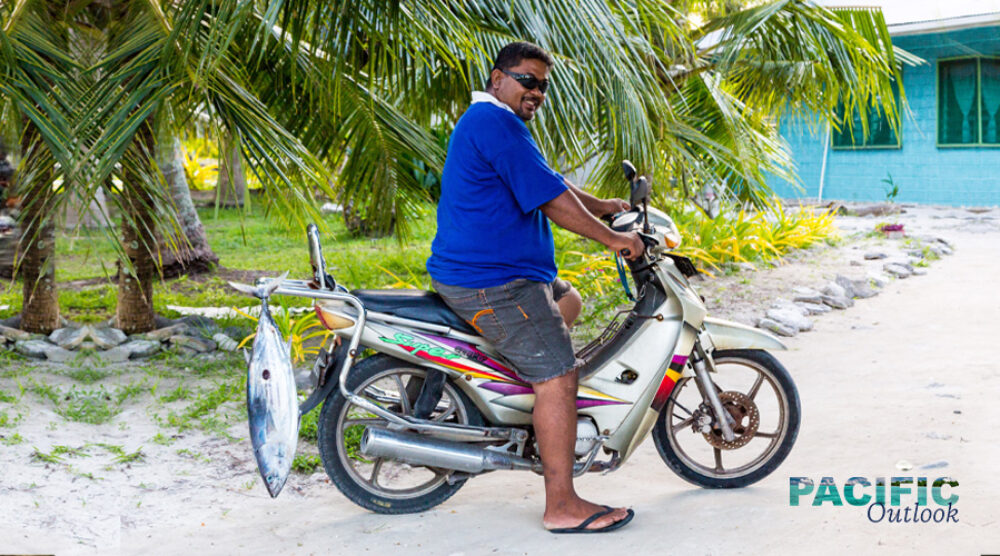Anyone who has travelled to Southeast Asia knows that cities such as Jakarta and Bangkok display a rich variety of ‘informal’ economic activities. Pedestrians often have to find their way along crowded sidewalks and through street markets where a bewildering variety of goods and services are offered to passersby. Travellers who visit rural areas get a sense of the many activities by which farm produce is processed, aggregated and conveyed to urban centres on minibuses and trucks. They see craft objects and simple manufactured goods being produced by artisans in rural market towns. And there is the street food, produced by an informal economy which serves, feeds and employs millions of people in Asia.
My recently-published book The informal economy in development considers the nature of informal economic activity – defined as livelihoods sustained by work done outside the framework of official rules and regulations. In every country in the world there is an ‘informal economy’ operating alongside the officially-sanctioned ‘formal’ economy. Closer observation shows that these two spheres of economic activity are intertwined, in relationships that are more often symbiotic than antagonistic. But antagonism does occur, for example in cities such as Jakarta and Bangkok (and also in Port Moresby and elsewhere in the Pacific). This hostility often takes the form of official campaigns to drive informal vendors, artisans and food-carts off the streets, despite their value to urban residents. Such purges may be inspired by a desire to improve the ‘efficiency’ of urban spaces. But often they are motivated by an ideology of ‘modernisation’, the belief that visible economic informality detracts from the glossy image city authorities want to project to the world.
The informal economy in development examines these issues in a Melanesian context. For almost 50 years I’ve been interested in why the informal economy in Papua New Guinea (PNG) – when compared with the dynamism displayed by informality in other parts of the developing world – has been so slow to flourish. I know that many observers regard informal economic activity as a sign of ‘underdevelopment’ (and the sooner it disappears the better). But I believe that in PNG the informal economy is still too small not too large. And I suspect this may be the case in at least some other parts of the Pacific, beyond Melanesia.
The PNG informal economy is too small because, like it or not, it may be generations before school leavers and rural-urban migrants in PNG have ready access to formal employment opportunities. Their numbers are simply too large in relation to PNG’s relatively small formal workforce, just as its total population (at between 8.8 and 9.6 million) dwarfs that of any other Pacific island state. Further – and unlike jobseekers in smaller Pacific states – PNG citizens don’t have the safety-valve of entry to ‘metropolitan’ labour markets. At least, they don’t have such opportunities in numbers proportionate to PNG’s own formal labour market. Citizens of some of the Micronesian states have rights of access to, and find work in, the US while for countries such as Vanuatu and Tonga the Australian and New Zealand programs for seasonal workers are relatively significant in terms of their small populations. In PNG’s circumstances it’s important that the unemployed have access to socially-useful income-earning opportunities, as distinct from formal ‘jobs’. Job-seekers in PNG must create these opportunities for themselves, requiring a process of innovation which has been painfully slow until recently.
Perhaps a lack of innovation, seen in the prevalence of ‘copycat’ informal activities, reflects a dearth of examples of successful Melanesian ‘micro-entrepreneurship’ for the unemployed to emulate. This is among the reasons I am interested in the growth of informal cross-border trade between PNG and Indonesia, occurring over the land border between PNG’s western provinces and the contiguous regions of Indonesian Papua. Experience of the modes of interaction in an Asian ‘bazaar’ may sharpen up the trading skills of entrepreneurs travelling from PNG, while introducing them to a range of goods and services not found in marketplaces back home. Visiting PNG shoppers – whose passivity in trading mystifies Indonesian vendors – may in time learn the art of robust bargaining. This would have longer-term benefits for the operation of marketplaces in PNG itself. In my book such situations are considered in terms of the primal encounter between Adam Smith’s ‘trucking and bartering’ (in ‘The Wealth of Nations’ 1776) and the world of Marcel Mauss’s ‘The Gift’ (1925). In Melanesia such encounters are as old as European colonialism itself.
My approach to these problems is historical as well as anthropological (and of course economic, since I am a rather boring orthodox economist). I re-interpret standard texts in these disciplines through the lens of informal economy. The narrative is set in three colonial urban centres and their respective rural hinterlands – Rabaul, Goroka and Port Moresby. It considers how Melanesians accommodated themselves to rapid economic and social change over a period extending to PNG’s independence in 1975. In an epilogue to the book I examine the present status of informal economic activity in PNG, and consider informality’s potential to provide better livelihoods for the nation’s people in future.
John D Conroy is an academic Visitor at the Crawford School of Public Policy, Australian National University.
The Pacific Outlook series is an initiative of the Pacific Hub.








